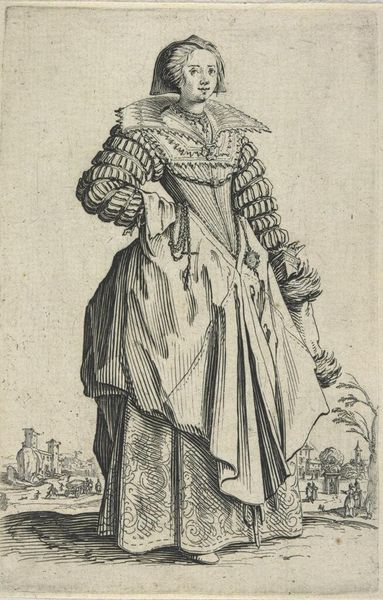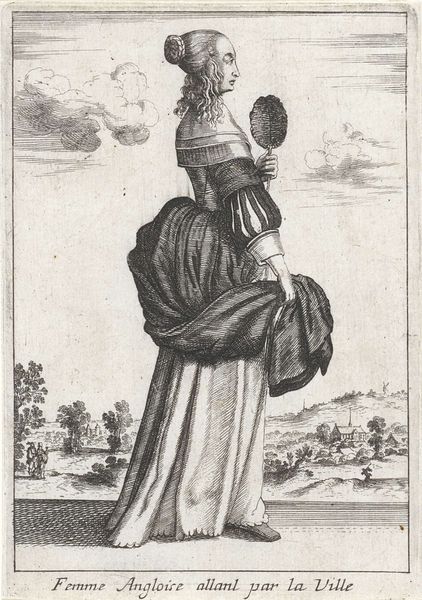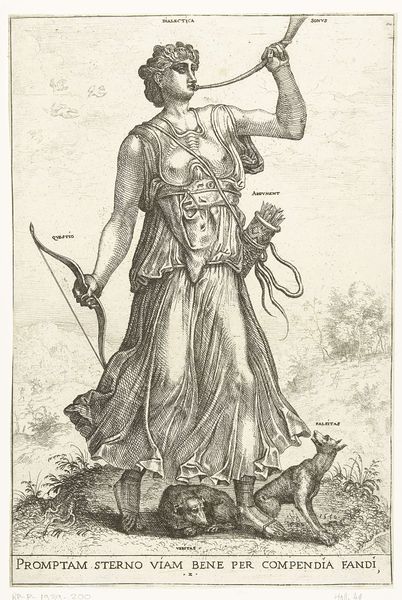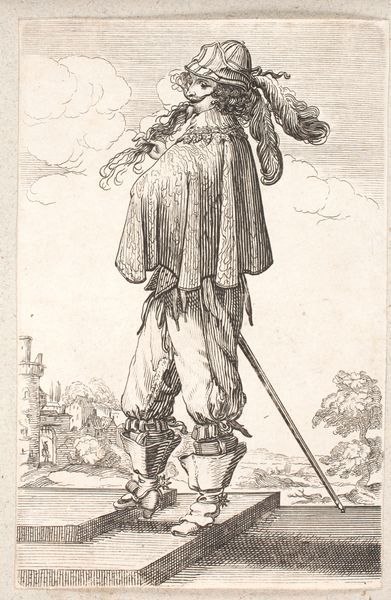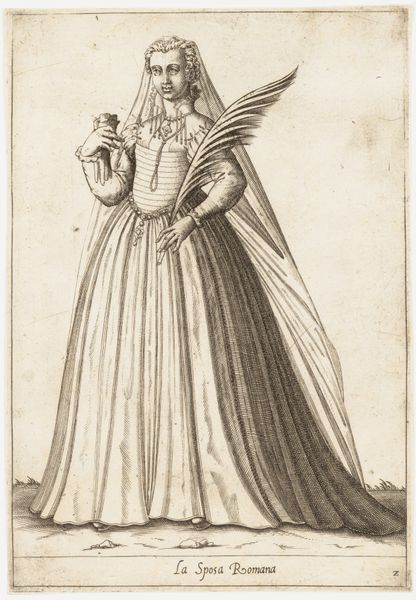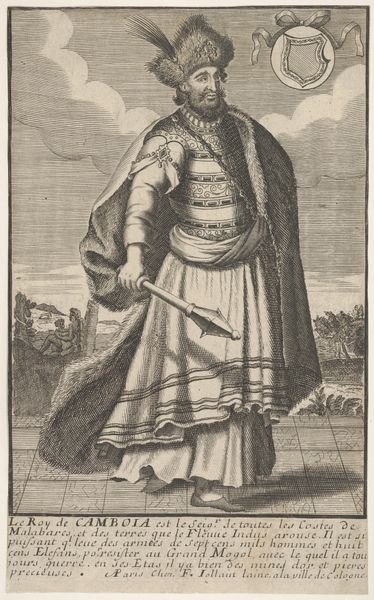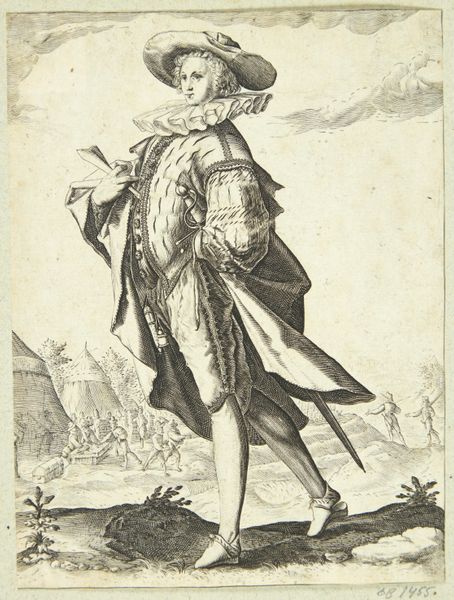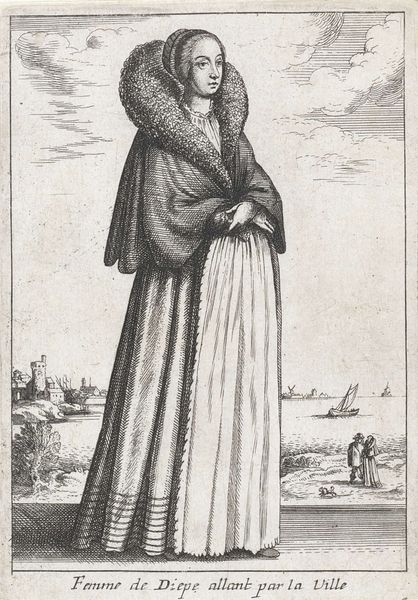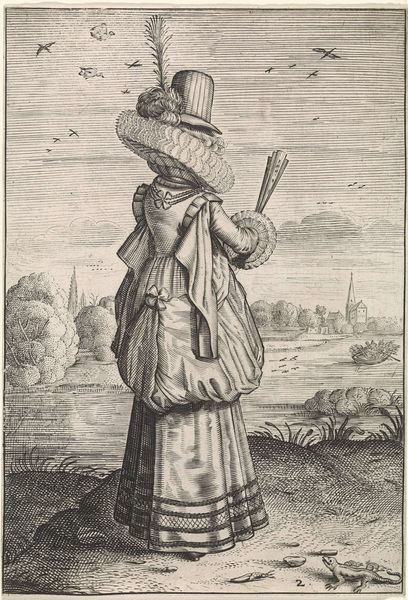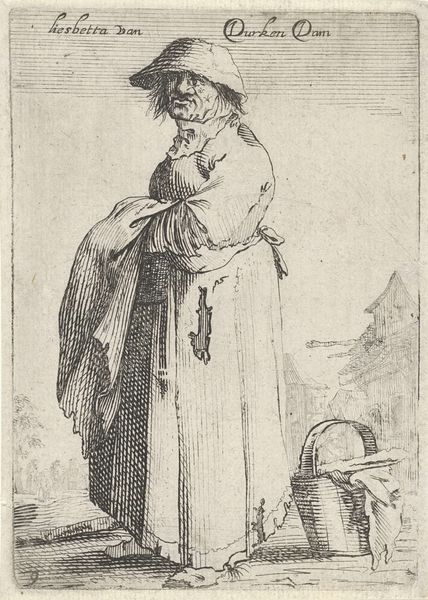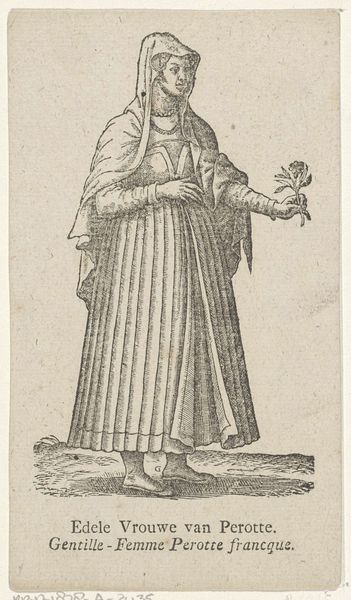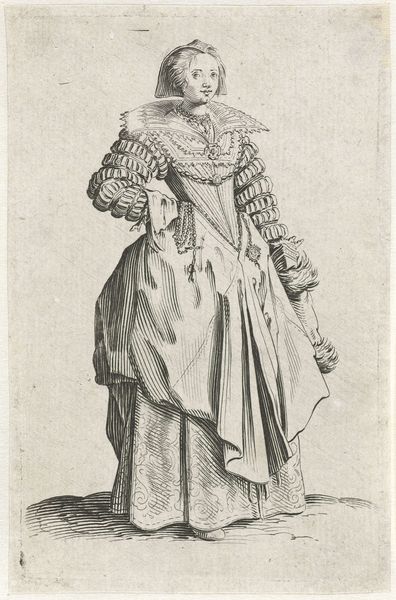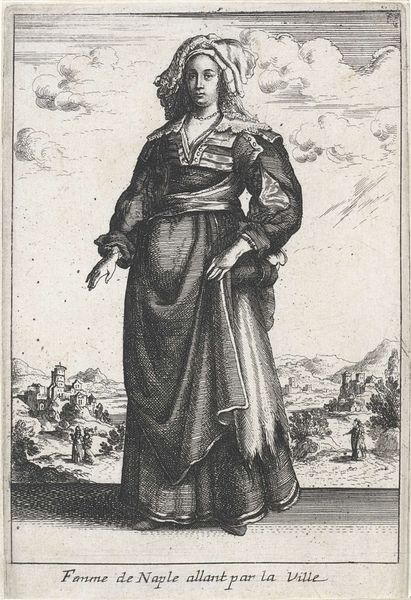
engraving
#
portrait
#
allegory
#
baroque
#
old engraving style
#
engraving
Dimensions: height 195 mm, width 100 mm
Copyright: Rijks Museum: Open Domain
Curator: I'm immediately struck by the contrast of the intricate line work against the almost crude depiction of her exposed toes. Editor: Indeed. What we have here is an engraving called "Tuinierster," created sometime between 1613 and 1617 by Matthäus Merian I. It’s currently housed in the Rijksmuseum. And yes, those toes... But tell me, what first captures your attention beyond the footwear? Curator: The vessel she balances atop her head! It's crowned with Medusa-like faces and writhing serpents. An imposing object held effortlessly—symbolically suggesting repressed passions or, perhaps, latent power disguised under a domestic guise? Editor: Interesting reading. From a materials perspective, the engraving process itself suggests a controlled aggression. Think of the tools required: burins, plates, acid…each mark deliberately etched, a direct transfer of intention onto metal. We see this intent transformed into a highly reproducible image intended for wider consumption. Curator: The basket filled with flowers, contrasts starkly. The duality evokes the themes of cultivated beauty intertwined with the unruliness and ever present chaos of nature that needs cultivation. Perhaps representing a deeper human drama within—the civilizing influence clashing against inner turmoil? Editor: Maybe, or is the imagery alluding more broadly to societal forces at play? The controlled cultivation implied in the image highlights access to gardens and cultivation reserved for a very select segment of the population at this point in history, this creates for me at least a kind of early form of social stratification expressed through horticultural symbolism. Curator: A compelling interpretation. I still wonder about her stoic gaze amid all the symbolic chaos surrounding her. There’s such contained resilience in that expression. Editor: Right, and consider the context again: mass-produced images like these, circulated among a rising merchant class, demonstrating skills, wealth, and the taming of the natural world... all packaged within the rigid social hierarchies of the time. Curator: The layers continue to unfold. This unassuming "Gardener" seems anything but simple. Editor: Exactly, a wealth of symbolic language is encoded through process and the materiality of its production. Curator: I concur—leaving much room for contemplating these historical imprints!
Comments
No comments
Be the first to comment and join the conversation on the ultimate creative platform.
